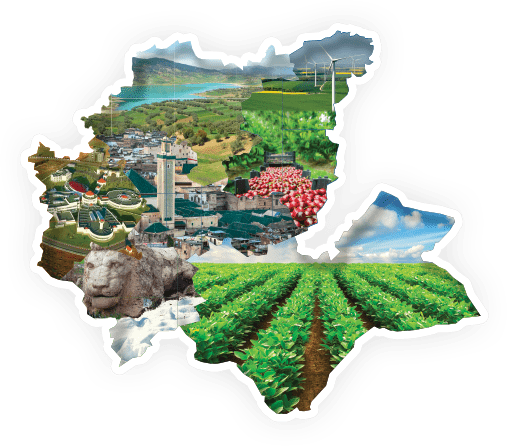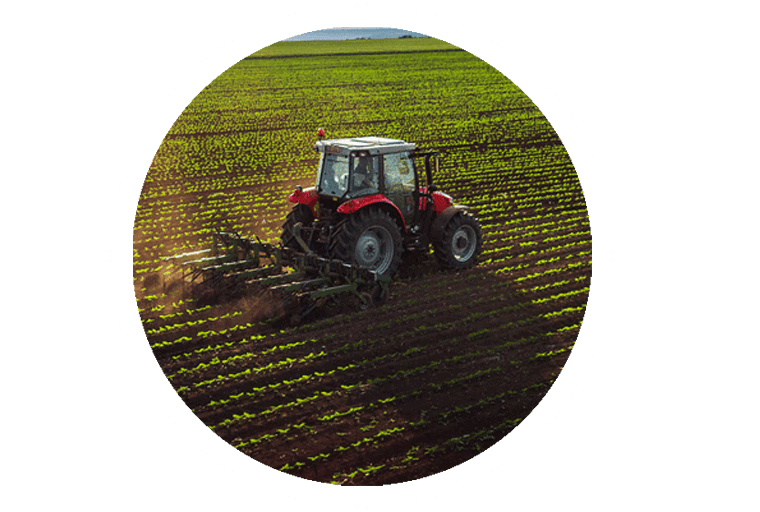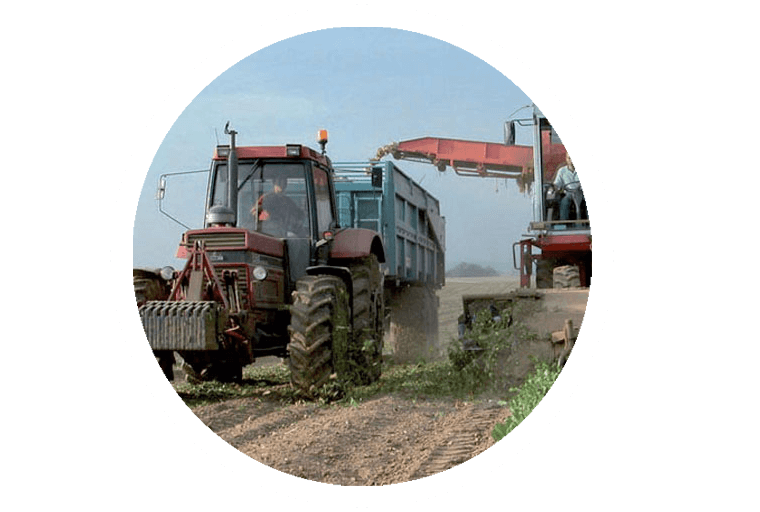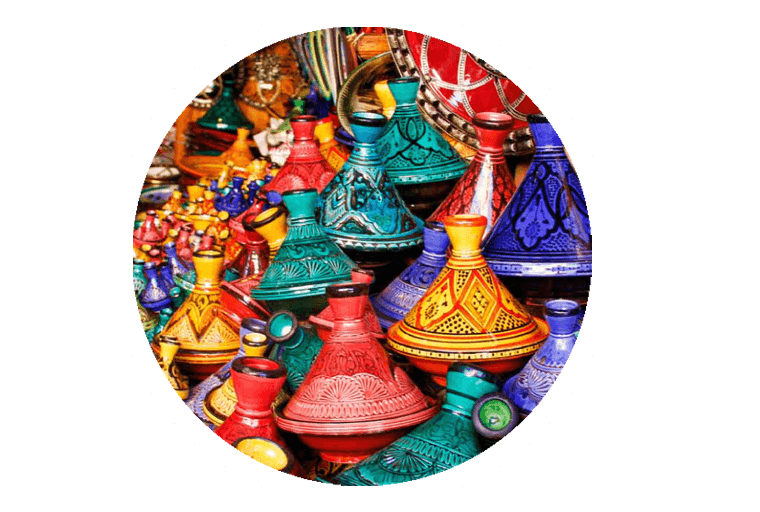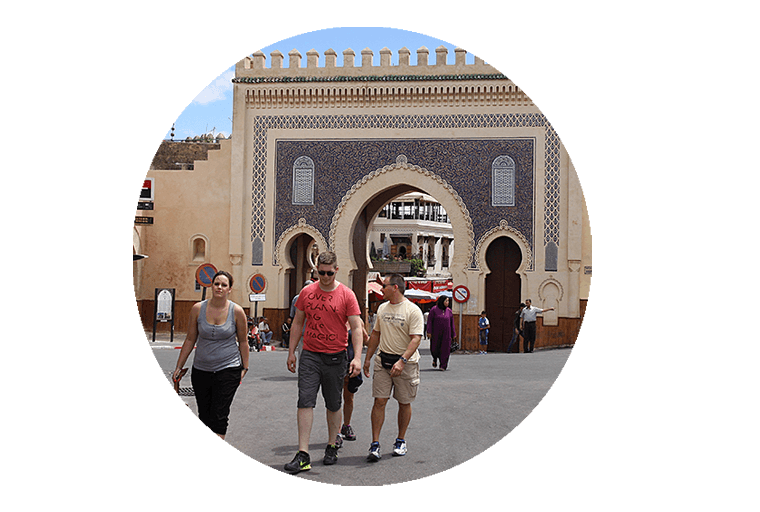




National development visions
Ambitious sectoral strategies in partnership with the private sector: PRI, Green Generation, etc.

A regional development vision
97 projects (11,2 BMAD) launched as part of the State-Region Program Contract 2020-2022 (PDR Fez-Meknes)

Ambitions for 2042 (RSPS)
More than 197 long-term projects, actions and directions
9
Prefectures and Provinces
194
Communes (34 urban)
60,5 %
Urban Population
Fez-Meknes region
An emerging regional pole since the 2015 territorial division in line with the implementation of the advanced regionalization
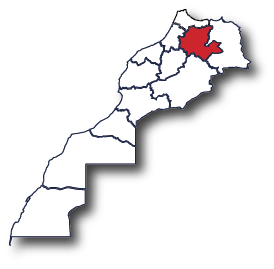
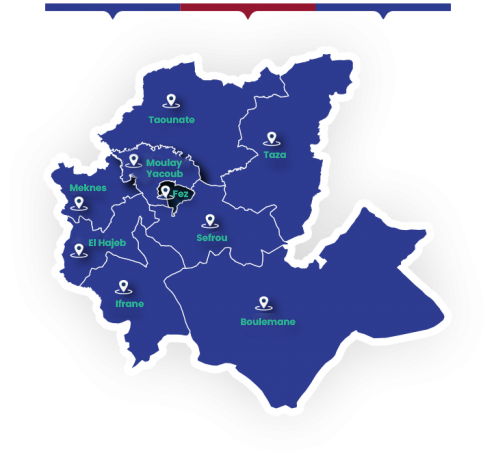

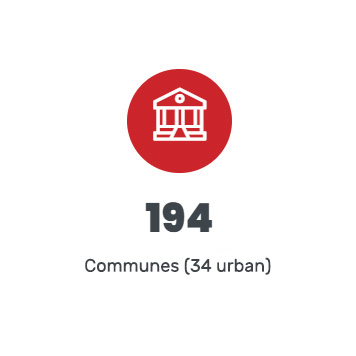
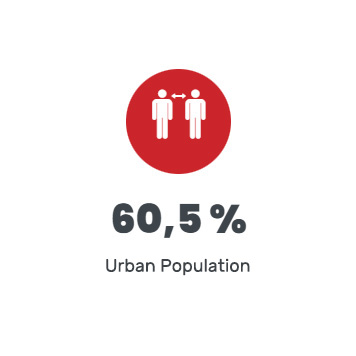
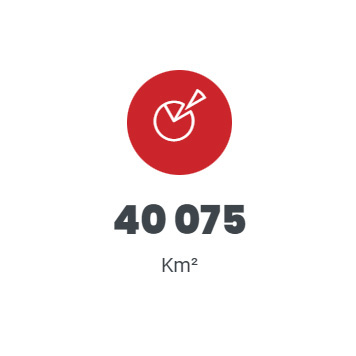
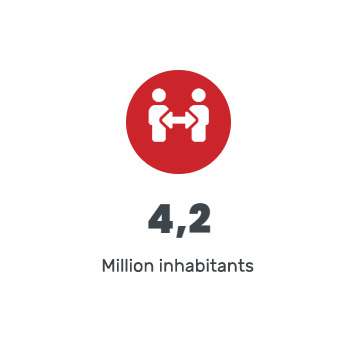
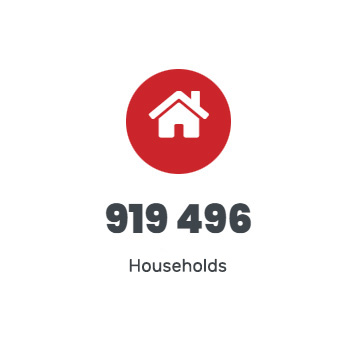
Km²
4,43
Million inhabitants
919 497
Households
42.2
Activity rates
13.2
Unemployment rates
8.2
Contribution to GDP
6.1
Growth rates (2012-2019)
12,7
Investment of the GB
5
of the state-owned
private land allocated for
investment
8,7
Unemployment rates
43
Activity rates
8,3
Contribution to GDP
2,3
Growth rates (2010-2017)
5
of the state-owned
private land allocated for
investment
12,7
Investment of the GB

2nd university pole at the national level



Données 2018




Données 2018
General overview
Fez-Meknes region resulted from the merging of two large regions, namely the former region of Fez-Boulemane and the region of Meknes-Tafilalet, with 4,43 million inhabitants, or 12% of the national population.
The Region is endowed with a geostrategic positioning that places it at the heart of national economic exchanges and demographic flows and
thus turning it into a new emerging pole.
Nationwide position
The Region contributes to national wealth up to 8.2% of GDP, ranked at the 4 th position nationwide. It also comes at the 1st position in terms of contribution to the national agricultural added value, and comes 2 nd in terms of land allocated to support the Green Morocco Plan in 2018.
GDP structure
The regional wealth is driven by tertiary activities with a contribution of 59.6% to the Region's added value, while the primary sector contribution amounts to 21.2% and finally the secondary sector represents 12.1%, including in particular the manufacturing industries.
The dynamics sparked by the Industrial Acceleration Plan (IAP) has positioned the Region in the 4 th position in terms of gross job creation with +35,000 jobs between 2014-2018 (i.e., 8% of the IAP's overall objective).
The Region opportunities and assets



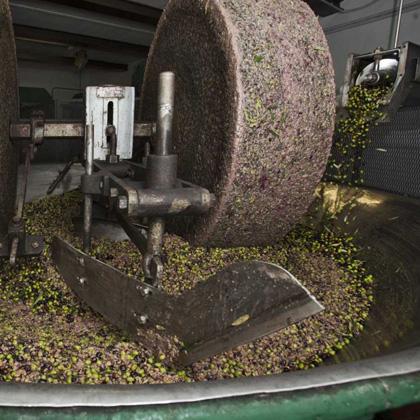

Agriculture sector

Handicrafts Sector

Industry Sector

Tourism sector

Offshoring sector
Development vision
A medium- and long-term vision for regional development
Regional Spatial Planning Scheme
Regional Spatial Planning Scheme
Regional Development Program (RDP)
Regional Development Program
The Region ambitions for 2042
Fez-Meknes region, with its socio-economic strategic assets, has to meet five major challenges in order to improve its competitiveness and diversify its industry. The strategy of the Region relies on the development of high potential sectors.
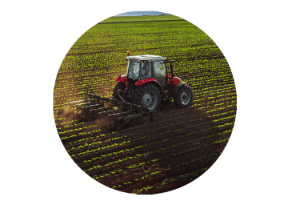

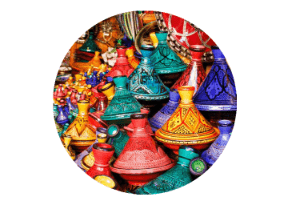




Attractiveness factors of the Provinces and Prefectures
Fez

- National hub of culture and heritage
- 62% of the region’s industrial units
- Old medina (280 ha) classified as world heritage by UNESCO in 1981: The oldest and largest medina in Morocco
- Capital of the craft industry par excellence and home of the craft industry
- Qualified and abundant workforce
- Tourist destination with various cultural and natural assets
- Two 18-hole golf courses
- Renowned hotel establishments, Riads and authentic Palaces
- Cultural tourism: several festivals, including mainly Fez Festival of World Sacred Music
- Offshoring sector, first employer in the city of Fez
- 5 universities: Sidi Mohammed Ben Abdallah University Fez, Quaraouiyine University of Fez, Euro-Mediterranean University of Fez, Private University of Fez
- “Lemta Fez olive oil” labelled core product.
Taounate

- Landscapes made up of forests, snow-covered mountains in winter
- Idyllic places: Al Wahda and Idriss I dams with their huge lake, natural sites of Ghafsai and Bouadel
- Various events: horse festival in Tissa, Moussems, etc.
- Provincial forest areas for hunting wild boar and partridge
- Economy basically built on agriculture and breeding: olive trees, market gardening, dried vegetables, beekeeping; the region is also known for its organic cereals
- Local products for which the region is reputed, such as apricots, olives and honey
- Medicinal and aromatic plants: lavender, mint, thyme, oregano, etc.
- Rural crafts: weaving and basketry
- Core product: « dry fig nabout of Taounate ».
Moulay Yacoub

- Capital of thermalism with the thermal springs of Moulay Yacoub and Ain Allah
- Agriculture sector considered as the core growth engine of the local economy
- Local products, the most important of which are capers, chestnut figs, lemta olives, Sebou mint, rosaceous plants, cereals, medicinal and aromatic plants and honey
- Salt deposits of the province: average annual production amounting to 12 000 T
- Core products undergoing certification: « Lemta olive oil », « My Yacoub capers ».
Sefrou

- Agricultural sector: main pillar (15,000 farmers, predominance of micro-property): cereals, fodder, market gardening, fruit growing, livestock
- Handicraft: Mats of Aït Alaham
- Cherry Festival of Sefrou declared by UNESCO as Intangible Cultural Heritage of Humanity
- Festival of rural tourism
- Four monuments, sites and areas of Sefrou listed as national heritage (Site of « El Menzel », Site of Bhalil)
- Labelled Core product: « olive oil of Sefrou ».
Meknes

- Imperial city, declared by UNESCO as « universal heritage of humanity ».
- Important cultural and architectural heritage, and a recognized tourist potentia
- Meknes ranked in the Top 10 cities to visit in the world in 2019
- 9-hole golf course
- Attractive civilizational hub: with the site of Volubilis, the Medina, moussems, events, crafts, popular arts
- Strong agricultural potential with a generous hinterland (orchards, olive groves and vineyards)
- One of the most important agricultural production regions in Morocco, known notably for its olive and wine growing
- National agricultural pole: several large groups: LCM-Aïcha, Huileries Meknès, AJP
- Four industrial zones: Sidi Bouzekri, El Bassatine, Mejjat, Agropolis with a new expected zone in Ouisslane
- The craft industry remains among the main job-creating sectors: 24 541 jobs
- Establishment of automotive suppliers (Delphi, Yazaki, Yura)
- Extensive range of touristic establishments.
Boulemane

- Rosaceous fruit trees playing an important role in the economy of the province
- Olive tree: the main tree species in the province, particularly in the Missour and Outat El Haj circles
- Livestock breeding plays an important role in the agricultural activities of the region
- Predominant agro-food branch (olive crushing units)
- Main craft activities: Wool weaving and knitting and traditional sewing (hanbel – jellaba)
- Ghassoul deposits (cosmetic clay) of Boulemane, a unique product in the world: average annual production amounts to 1,000 T
- Core product undergoing certification: Outat El Haj olive oil, Zendaz honey from the Bouiblane massif.
Taza

- Agriculture sector, the main pillar of the local economy: cereal farming, arboriculture (olive trees with an important production at the national
level, almond trees, fig trees, breeding) - Medina of Taza, registered as architectural and urbanistic heritage at the national level
- Diverse handicrafts: Carved stones of Oued Amlil, carpets of Bni Ourayn and Tahla, basketry of Bni Frassen and woodwork in Bni Oulid
- Core product: « Almond of Aknoul »
- Bab Louta Lake with a surface of 300 ha, home to a variety of aquatic species
- Site of Bab Boudirest listed by the cultural affairs as a built cultural heritage. Integral part of the national park of Tazekka, it abounds in water sources and forests.
Ifrane

- Province of rural tourism with excellence
- Named the little Switzerland: declared in 2013 the second cleanest city in the world
- Ifrane National Park: the largest cedar grove labeled a Biosphere Reserve by UNESCO on March 19, 2016
- Image related to the resort and high-level sports
- Al Akhawyne University (based on the American educational system)
- Nature tourism: an important potential for the local economy (41 sites of great natural attraction (waterfalls, lakes, geological sites, belvederes, forest areas, 7 lakes, etc.)
- Michlifen Golf and Country Club: an 18-hole golf course on 77 hectares located at an altitude of 1650 meters, between mountains and forests of cedar and holm oak
- Core product undergoing certification: Timahdite lamb.
El Hajeb

- Area of onion and potato production par excellence
- Onion culture contributes to more than half of the regional production
- Natural, historical and socio-cultural potential
- Mountain tourism, ecological tourism, cultural tourism, agritourism
- Local products: olive oil, different essences honey, cereal derivatives, pastoral essences mainly ANIS
- Core product undergoing certification: « Agourai green Anis ».
Receive our publications and brochures on the Region
Sign up to receive our latest publications and brochures on the region


